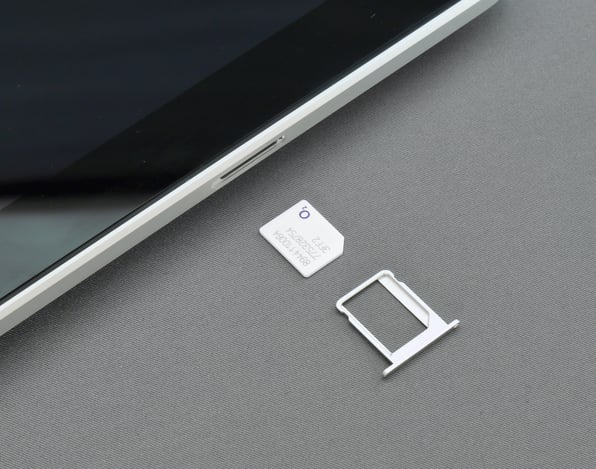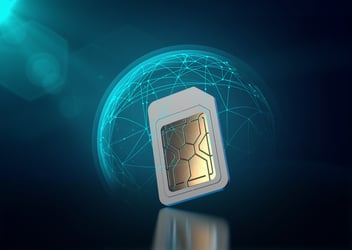

Multi-IMSI vs eUICC: Are They the Same Thing?
In a world where staying connected across borders is crucial, the evolution and importance of IoT connectivity solutions are on the rise. Smart network solutions like multi-IMSI and eUICC are becoming increasingly popular, harnessing advanced network switching technologies to maximize the potential of IoT devices.
While these technologies are similar, they have core differences that make them valuable for different use cases. Understanding the unique differences between these options can help you decide which is most valuable for your business’s ongoing connectivity needs. This article will help you get started by exploring the ins and outs of multi-IMSI and eUICC solutions. Let’s get started!
What is Multi-IMSI?
The International Mobile Subscriber Identity (IMSI) is a 15-digit number that identifies a specific cellular network subscriber and is a crucial component of a subscriber identity module (SIM) card. Multi-IMSI solutions provide information about the IoT device.
A single IMSI lets devices connect to a specific number of networks. In contrast, a device with multi-IMSI technology allows subscribers to switch between carriers and connect to a larger number of networks. This solution has several pre-loaded IMSIs and is valuable for manufacturers deploying devices globally or creating roaming applications. On a simpler level, multi-IMSI connectivity allows a device to automatically switch to the best available mobile network depending on geographical region.
What is eUICC?
Embedded Universal Integrated Circuit Card (eUICC) technology is a component of an embedded SIM (eSIM) technology. This solution allows users to preload IMSI profiles to let devices operate globally and switch carriers easily. eUICC SIM devices are preloaded with a specific profile to connect to a network. Once the device is connected, eUICC allows it to download multiple SIM profiles.
eUICC solutions are often used by companies that require international IoT deployments. By allowing you to switch service providers over the air (OTA), eUICC eliminates the need to replace the card. Profiles can be changed quickly to adjust to a company’s shifting needs.
The Difference Between Multi-IMSI and eUICC
Multi-IMSI and eUICC technologies are similar because they provide a solution for switching carriers and offer multiple profiles. While you might assume the technologies are the same, they have some key differences to remember. Multi-IMSI provides multiple SIM profiles on a single SIM card, each containing its own IMSI. eUICC is a physical hardware component embedded directly into a device and allows for the remote provisioning and management of profiles.
Multi-IMSI relies on traditional SIM cards rather than being embedded within an IoT device. eUICC is a permanent part of the hardware that can’t be removed like a traditional SIM card. Because of how they’re designed, a multi-IMSI requires manual switching between profiles.
Both options allow your devices to connect to local networks globally – however, eUICC devices must be provisioned OTA. Though multi-IMSI provides similar automated switching, it will sometimes cycle through multi-IMSI profiles rapidly, which causes connectivity issues.
Why You Might Choose Multi-IMSI
Multi-IMSI and eUICC have unique advantages that make them better for specific applications and use cases. Here are some reasons why you might choose a multi-IMSI solution.
Multi-IMSI is Cost-Effective
If cost concerns your enterprise, a multi-IMSI solution might be more suitable. Multi-IMSI can be configured to automatically select networks with the best signal and the lowest costs while switching profiles with an eUICC solution is far less cost-effective. Because multi-IMSI SIM cards are preloaded with various subscriber identities, they allow your device to easily switch between carriers and help you resume contracts when necessary.
Multi-IMSI Allows for Autonomous Switching
Multi-IMSI is also beneficial because it allows for autonomous switching and automatically selects the best mobile network operators for your device. eUICC requires you to switch between profiles manually. If you choose an eUICC solution, you’ll have to download and activate profiles rather than have the process done for you when you switch geographical regions. Many enterprises choose multi-IMSI for this convenient feature.
Multi-IMSI is Well-Established
If you’re looking for a technology you know you can trust, multi-IMSI might be the best option for you. This technology has been around for far longer than eUICC technology, and because of that, it’s had more time to improve on weaknesses and become more effective for users. In comparison, eUICC technology is much newer and hasn’t had as much time to improve on technological weaknesses, meaning you might encounter more problems.
Why You Might Choose eUICC
Though there are several advantages of multi-IMSI technology, there are also reasons why you might choose eUICC. Here are some of the core advantages of eUICC technologies.
eUICC Allows for Remote Provisioning
Perhaps the most significant advantage of eUICC is that it allows for remote provisioning. eUICC allows for remote eSim provisioning OTA, which can be incredibly valuable for enterprises using IoT devices that require frequent or dynamic changes to network subscriptions.
eUICC Reduces Hardware Dependance
Multi-IMSI solutions rely on a physical SIM card to switch between profiles, and this reliance can be troubling if the SIM card is lost, damaged, or misplaced. eUICC users don’t have to worry about SIM card dependence because eUICC solutions are embedded into devices. This benefit also eliminates the need to consider device compatibility with traditional SIM cards, which can cause problems depending on your devices.
eUICC is Suitable for Large Enterprises
Because of its embedded technology, eUICC is often suitable for larger enterprises that require frequent switching between profiles to operate across geographical regions. This technology offers more flexibility because it removes the need to have physical SIM cards while still providing seamless connectivity.
The Velos IoT Solution
Unlock Your Business Potential with Velos IoT. As a global leader in integrated connectivity solutions, we offer a cutting-edge approach to managing and connecting your IoT devices across over 700 networks in over 200 countries and territories. With Velos IoT, you can unleash the full potential of your business operations by seamlessly managing and optimizing connectivity on a global scale.
The Velos IoT Solution is a secure, reliable, and efficient solution designed for long-term success to ensure you have the connectivity you need no matter where you’re operating. Find out more about the Velos IoT solution by speaking with an expert today.
Speak to a Velos IoT expert
Related articles


A Quick Introduction to multi-IMSI and its Functions
An increasing number of companies are foreseeing their daily operations to be integrated with IoT...

Understanding eUICC vs eSIM: Key Differences Explained
You would be forgiven for thinking that eUICC and eSIM are the same thing, given that they are...
